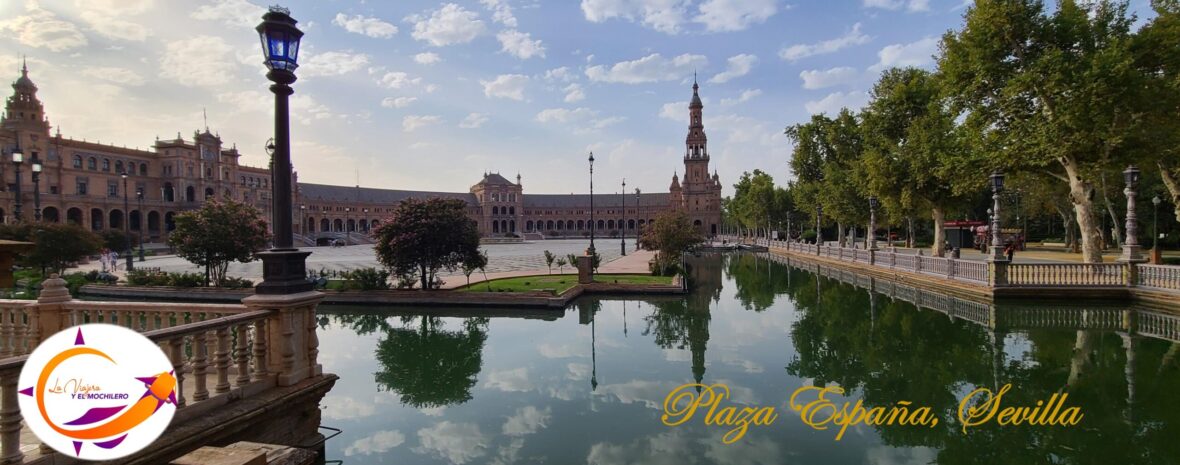One of the places we had the opportunity to visit in Cáceres was the Palace of the “Golfines the Lessors”, one of the city’s most emblematic buildings. It was built between 1510 and 1511 on top of an earlier house belonging to the Golfín lineage, a noble family that stood out during the Reconquista and kept this residence as their private home for more than 500 years. From the Church of San Francisco, crossing through Plaza de San Jorge, one can see one side of this extraordinary structure.

An important fact is that the Palace of the Golfines de Abajo served as the temporary residence of the Catholic Monarchs during their visits to Cáceres. In addition, one of the few coats of arms of the Catholic Monarchs that exist in the city’s historic quarter was placed here, as a sign of gratitude for the services rendered by the family.

The Palace of the Golfines de Abajo combines two distinctive architectural styles: a 15th-century fortress house, complete with a tower and battlements (overhanging parapets), and an impressive Plateresque Renaissance façade from the 16th century. This magnificent façade was commissioned by Sancho Paredes Golfín, son of Alonso Golfín, who was a city councilor in Cáceres and chief chamberlain of Queen Isabella the Catholic. He also promoted the creation of the Hall of Lineages, better known as the Hall of Arms, decorated with richly carved wooden ceilings and family coats of arms that reflect the lineage and power of the Golfín family.
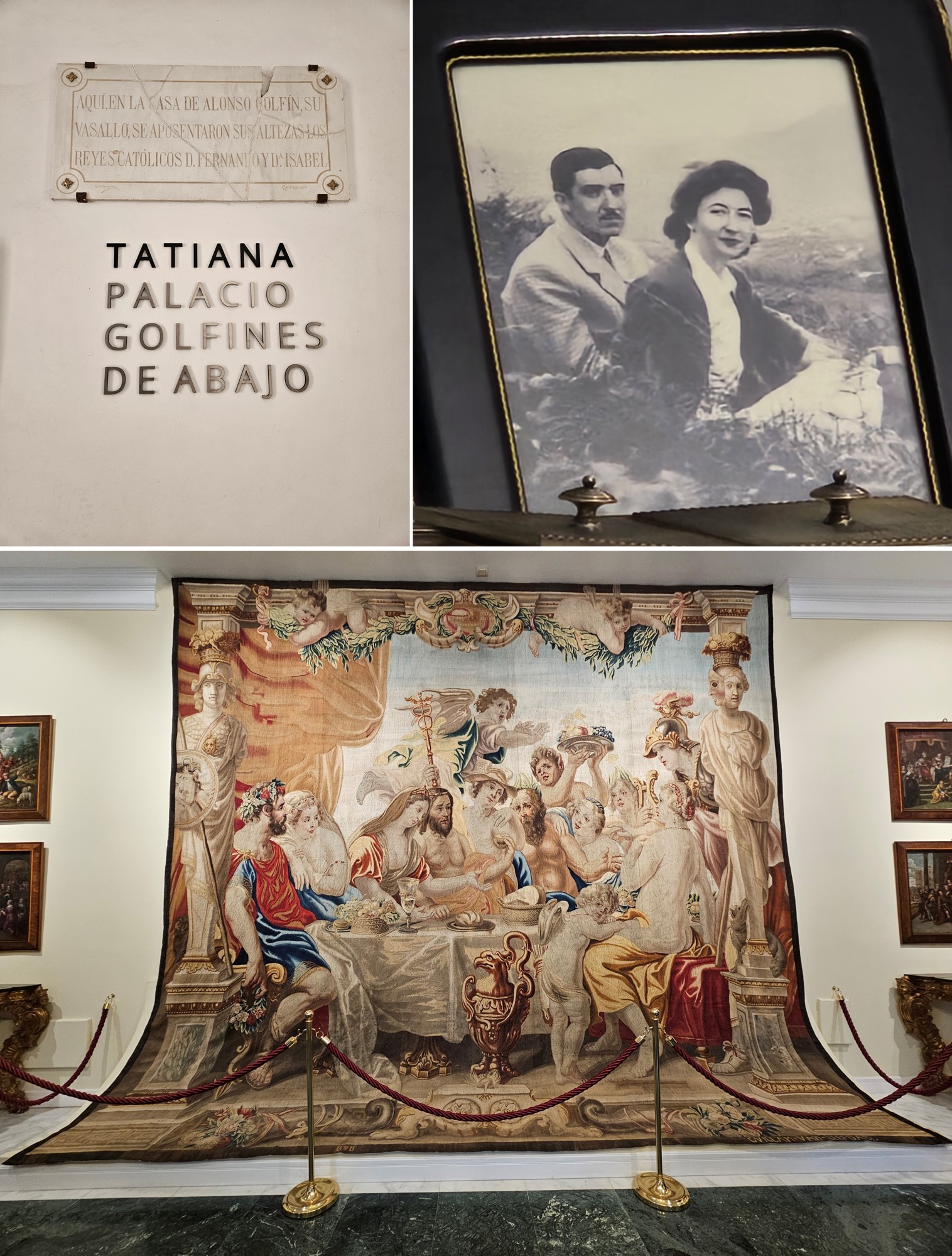
In 2025, the Palace of the Golfines de Abajo was transformed into a museum managed by the Tatiana Pérez de Guzmán el Bueno Foundation. Doña Tatiana, Marchioness of Santa Marta and Torre de Esteban Hambrán, was the last direct heir of the Golfín lineage. She founded the institution with the purpose of preserving the palace and dedicating its heritage to public service, safeguarding a legacy that spans more than 500 years of history, art, and noble heritage in Cáceres.

Thanks to the vision of Doña Tatiana Pérez de Guzmán el Bueno and the work of her foundation, the palace has preserved its historical, artistic, and documentary value, becoming a living museum dedicated to honoring the memory of the Golfín lineage and promoting cultural service to society through restoration, museography, education, research, and digitalization. After her passing in 2012, the foundation completed the restoration of the building and inaugurated it as a museum in 2015, opening it to the public as a space of heritage and culture.
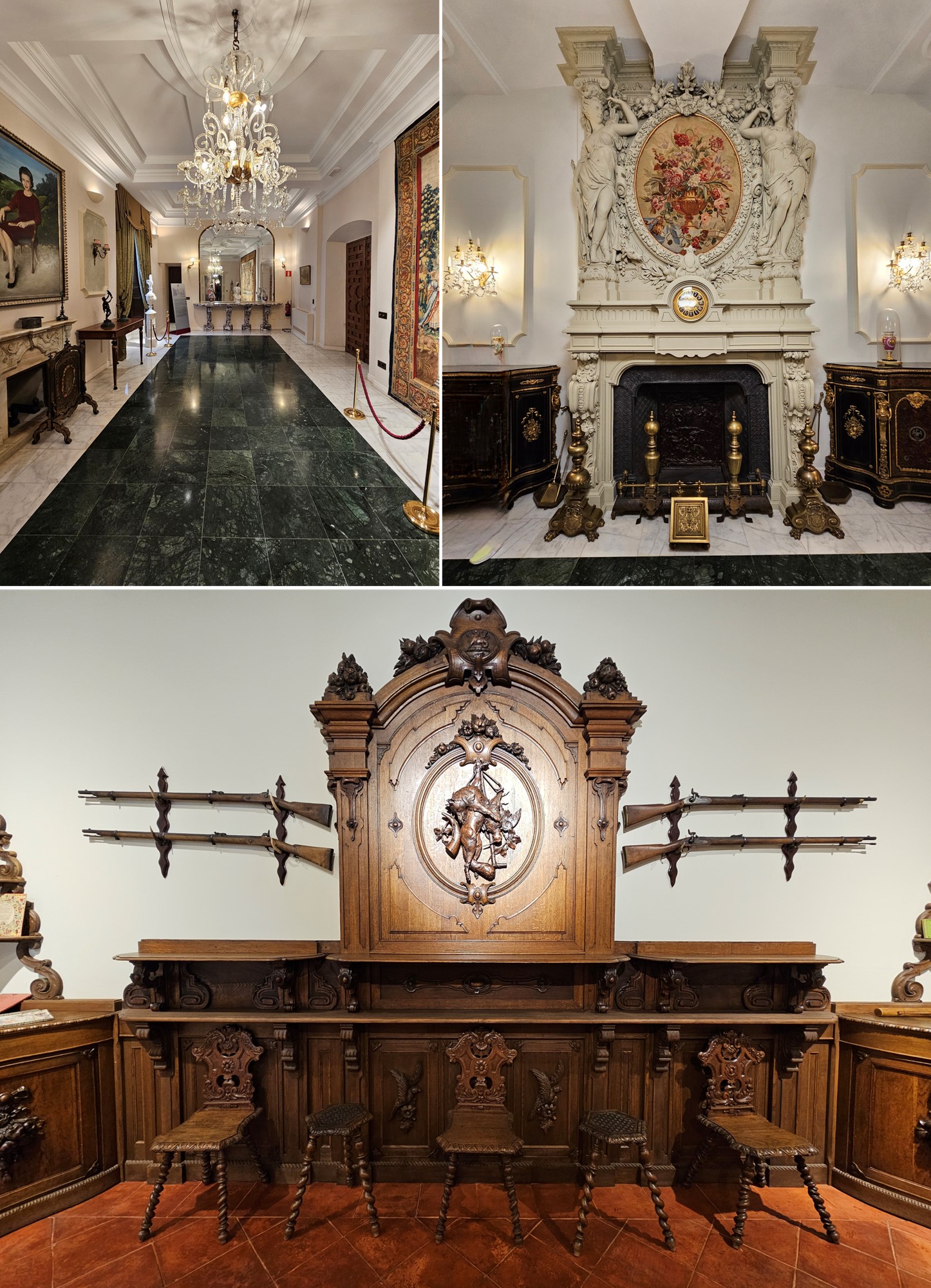
The museum houses a collection of furniture, tapestries, statues, and documents ranging from the 14th to the 20th centuries. Today, it is one of the main tourist attractions in Cáceres, offering guided tours that allow visitors to take a true journey back in time. These tours lead the public through the museum’s different rooms, displaying furniture, documents, decorative objects, and portraits, providing a rich and complete experience.
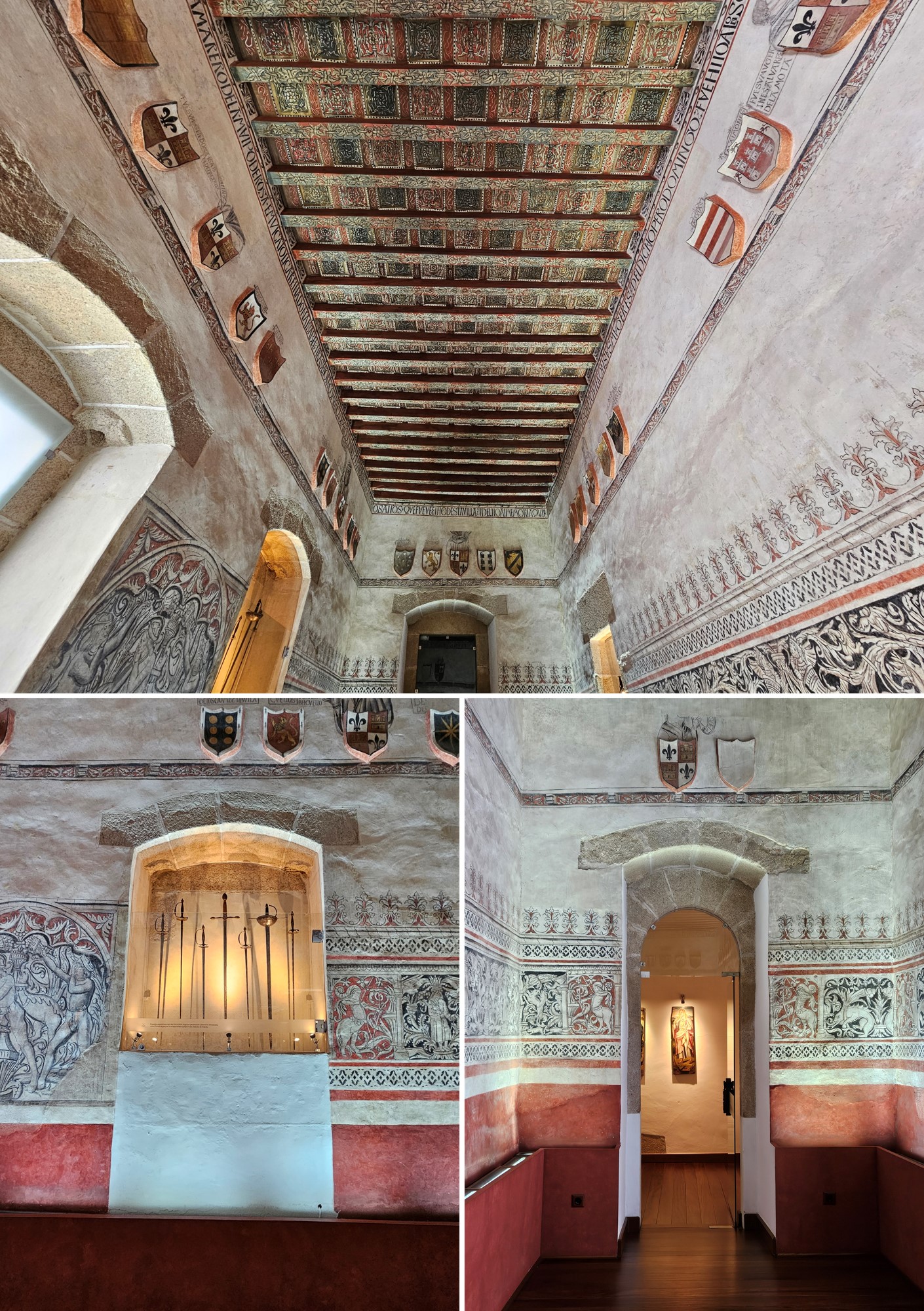
One of the rooms that must be highlighted is the Hall of Arms, also known as the Hall of Lineages, an exceptional example that shows how deeply the nobility imitated the symbols of prestige and authority of the Crown. As mentioned earlier, it was built in the first half of the 16th century by Sancho Paredes Golfín, who held the prestigious position of chamberlain to Queen Isabella the Catholic. The hall’s richly detailed decoration lets us admire and better understand the interiors of the main rooms in Castilian palaces, reflecting the family’s modern taste for Italian styles and their proud display of lineage, fervently expressed through coats of arms and heraldry.

In 2004, the restoration of the Hall of Arms (Hall of Lineages) was undertaken at the request of its owner, Doña Tatiana Pérez de Guzmán el Bueno. For six months, the necessary work was carried out to recover mural paintings that had been hidden under layers of whitewash and had been discovered by chance a short time earlier during renovations in the palace. The polychrome wooden ceiling was also restored, window openings that had been sealed over the centuries were reopened, and others were closed off to recover the room’s original layout.

Thanks to extensive conservation work, the inner courtyard was restored in 2018, using original techniques and bringing back traditional sgraffito and mortar finishes.
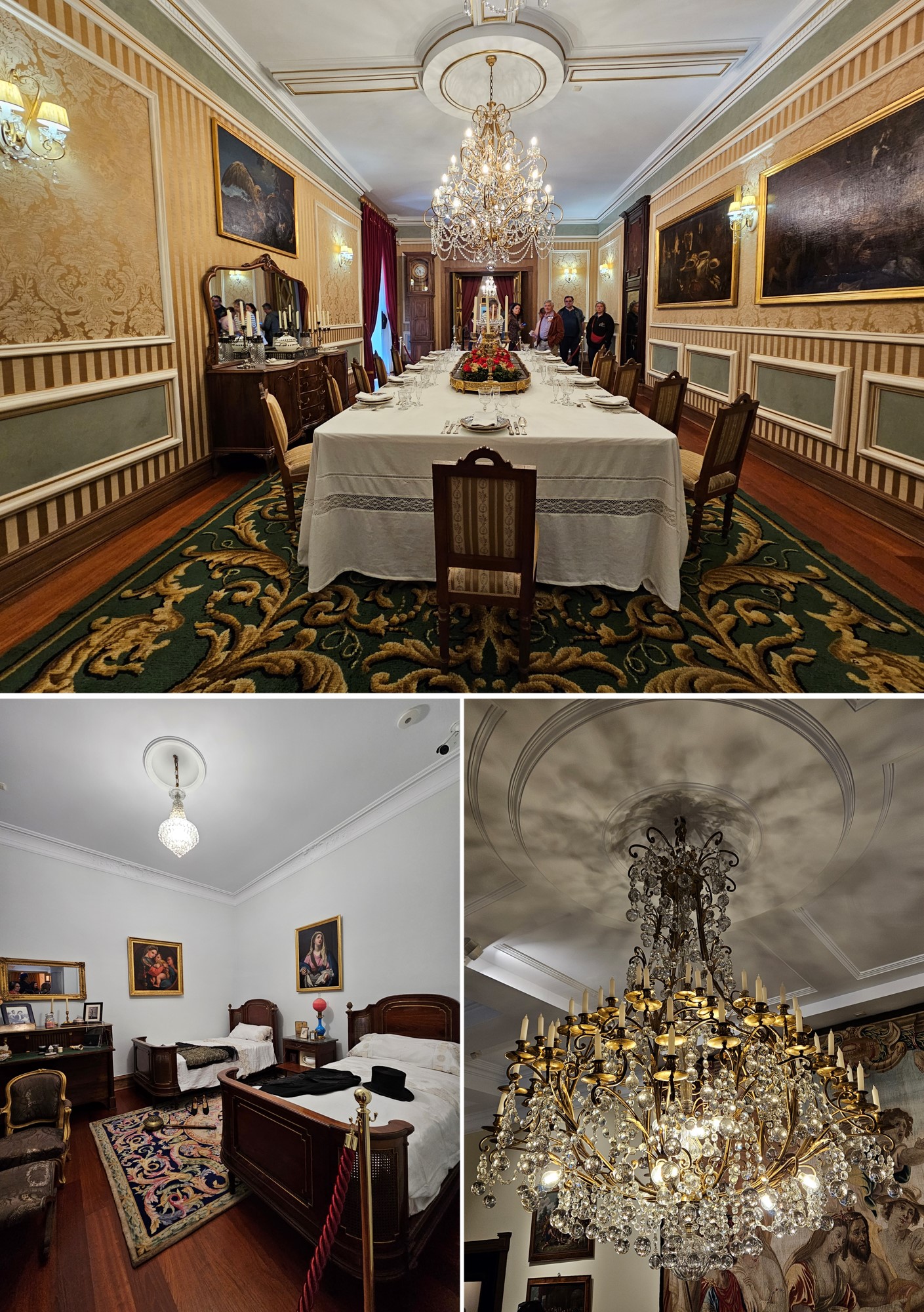
By 2023, new rooms had been inaugurated: the grand dining hall, a bedroom with a dressing area, and a vestibule, thereby enriching the museum tour with restored pieces, including furniture, lighting, and paintings.
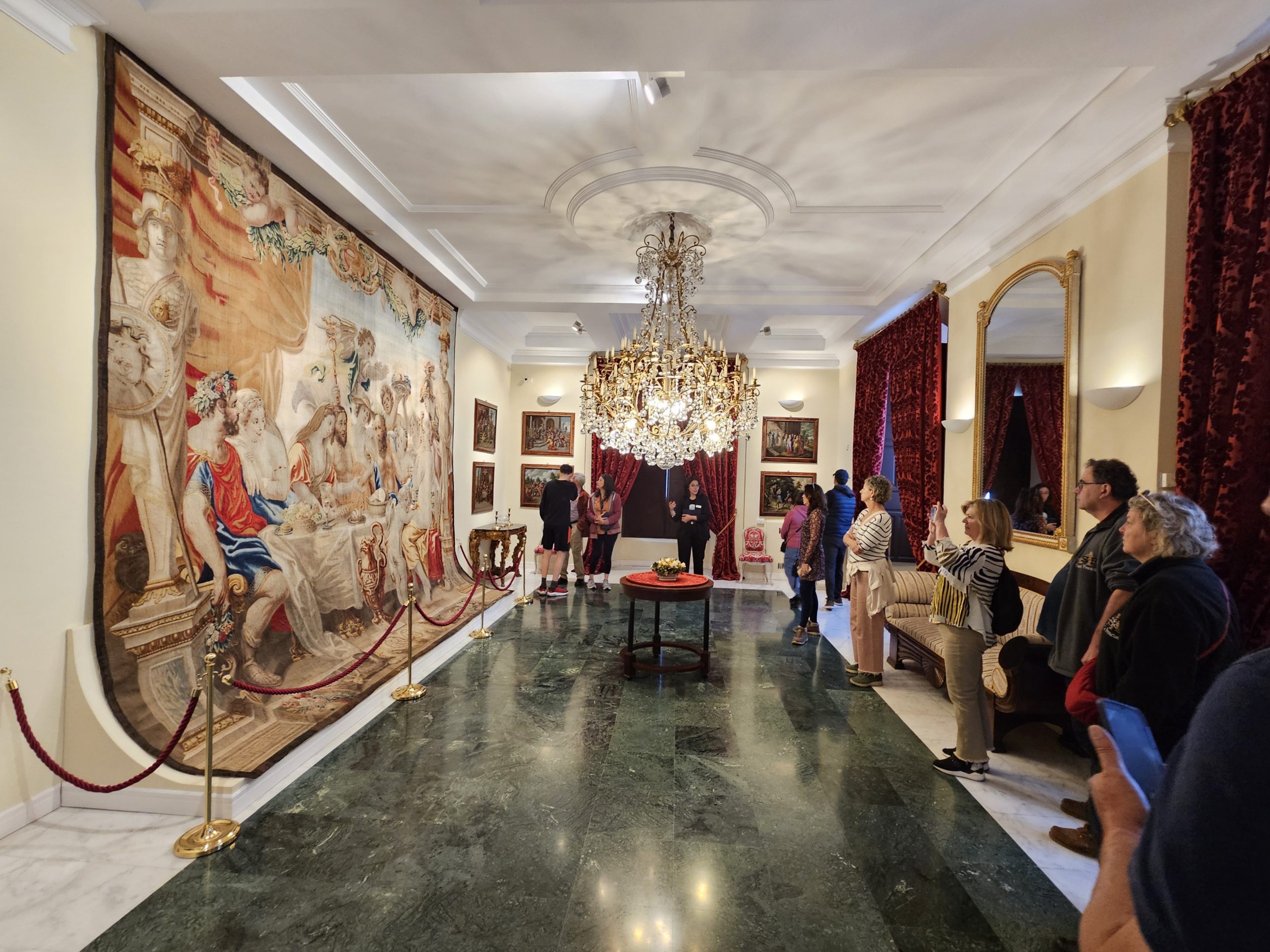
The Tatiana Pérez de Guzmán el Bueno Foundation is not only dedicated to the protection of material heritage, but also develops programs in civic education, local entrepreneurship, conservation, and cultural promotion aimed at young people in Extremadura and Castile and León. It also maintains notable collaborations, such as an agreement with the Prado Museum for the restoration of Goya’s works and the donation of drawings by Emilio Sánchez Perrier.

Origin and Legend of the Golfín Family
The Golfín surname seems to have its origin in Flanders or France, derived from variants such as Holken, Holquin, or Holguín, and is etymologically linked to the Saxon word Wulf, meaning “wolf.” According to legend, the first Golfines arrived in the 12th century, taking part in the crusade of King Alfonso VIII. After the victory, many remained in Spain and, as “landless nobles,” devoted themselves to cattle raiding. A tale of redemption tells that Alfón Pérez Golfín, captain of the family, fell in love with María Gómez Tello, daughter of Cáceres’s mayor. After earning a royal pardon, they married, and he settled in the city, laying the foundations of the lineage. Later, the clan divided into two branches, giving rise to the palaces of “Abajo” (Lesser) and “Arriba” (Higher).

